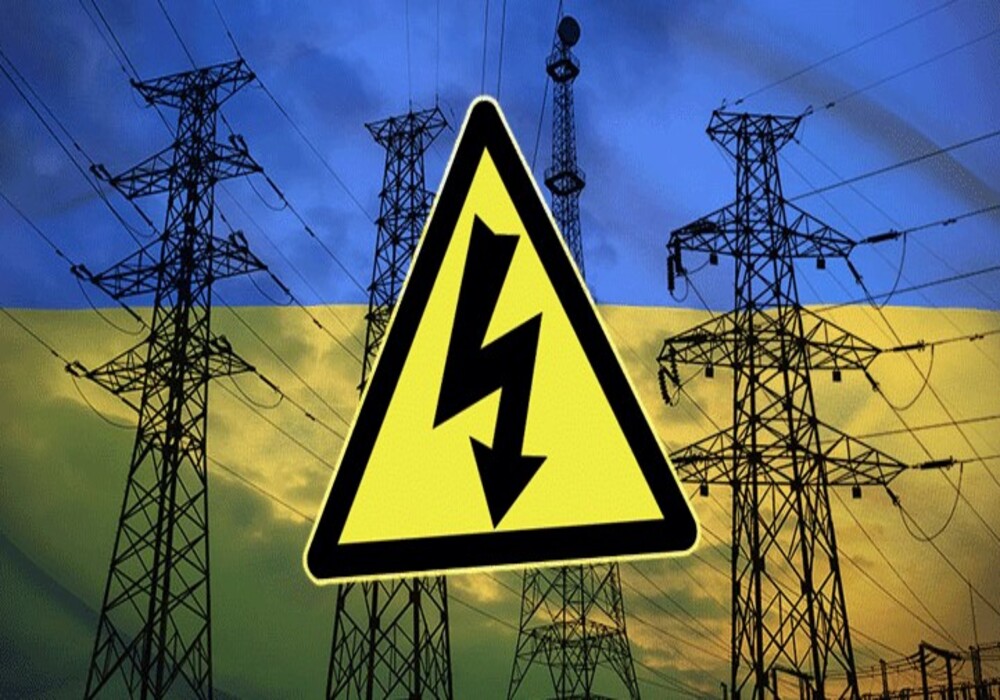AC/DC Power
Electric power: your first steps
In this article about energy electricity, we will talk about electrical energy in telecommunications in the simplest possible way.
As in any productive entity, telecommunications depend on electricity to carry out their tasks. On the other hand, it is standardized worldwide, which is very rare in technology.
In addition, from every point of view, electrical power for telecommunications is little known, even by engineers and technicians.
Surely, at some point you have been curious about why when the power fails telecommunications systems are not affected.
We will explain all this in the 2 posts we have prepared for you called Electrical energy for telecommunications. Part 1 and Electrical energy for telecommunications. Part 2. Don’t miss them!
Next, we will talk to you in a very general way about AC and DC electricity but dispensing with technical terminology to make it easier for you to understand.
Let’s start at the beginning: What is electrical energy?
This phenomenon is one of the most important in modern life. Simply stated, electricity is a form of energy.
In fact, all our comforts and great advances are based and function thanks to this marvel. Can you imagine if electrical energy did not exist, or even worse, if for any reason it ceased to exist?
For sure, humanity would go back at least 200 or 300 years.
Although it comprises many parameters, here we will talk about the most influential ones, which are voltage or tension, current and active electrical power.
We can define voltage in electrical power as the difference in potential at 2 points. This allows current to flow between them.
As an example of this, imagine a pipe full of pressurized water, and you interconnect it to another one that is dry by placing a fan blade.
The water will flow into the dry pipe and move the fan blade. Then, the pipe with water simulates a conductor with a higher potential than the one without water.
This water, which passes between the two, serves as the current and the fan blade is the equipment that operates the current. The combination of voltage and current is the electrical power.

The same happens in the case of an incandescent bulb, between the ends of the filaments there is a potential difference.
When they are energized, when the switch is turned ON, a current passes between them. The ratio of this current to the voltage at the ends is the power.
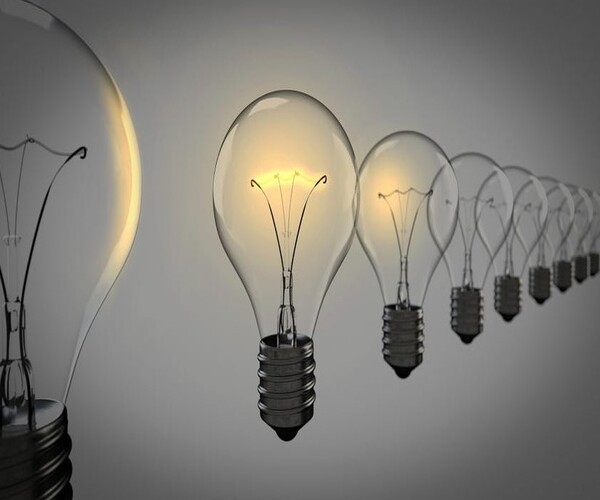
Existing types of electricity
Electricity is of 2 types, alternating current or AC electricity and direct current or DC electricity. In the case of AC electricity, it has a waveform. It fluctuates in time from a negative value, passes through 0 and reaches a positive value.
DC electricity maintains a constant linear value over time. In the image below, you can see these concepts graphically.
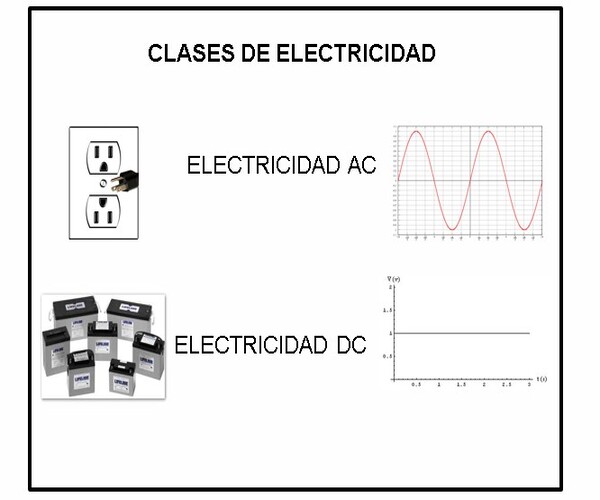
As a characteristic of each one, AC power is used for domestic purposes and in most industries.
It is used for appliances such as TV, classic lights, etc., as well as some equipment for the production of goods and services.
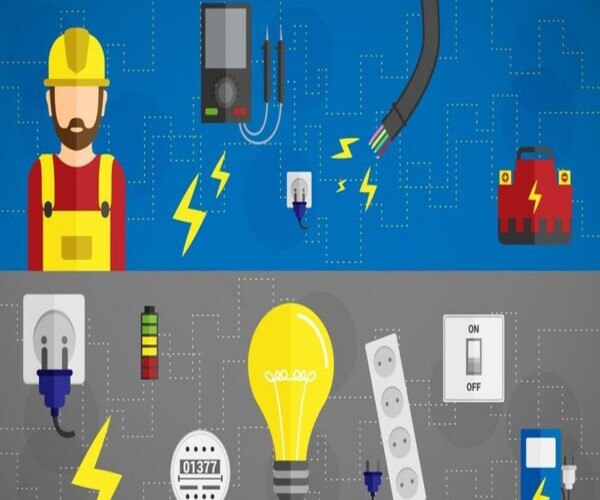
On the other hand, DC electricity is used in certain special equipment, especially in those where continuous operation is required. It is also used in electronic components.

Advantages and disadvantages
The main advantage that DC power has over AC power is that it can be stored in batteries and accumulators for later use.
On the other hand, AC electricity allows high voltage levels and requires low current values.
So compared to the conductors to be used with DC power, AC electricity allows powering loads with smaller gauge conductors. This makes it ideal for transport over long distances.
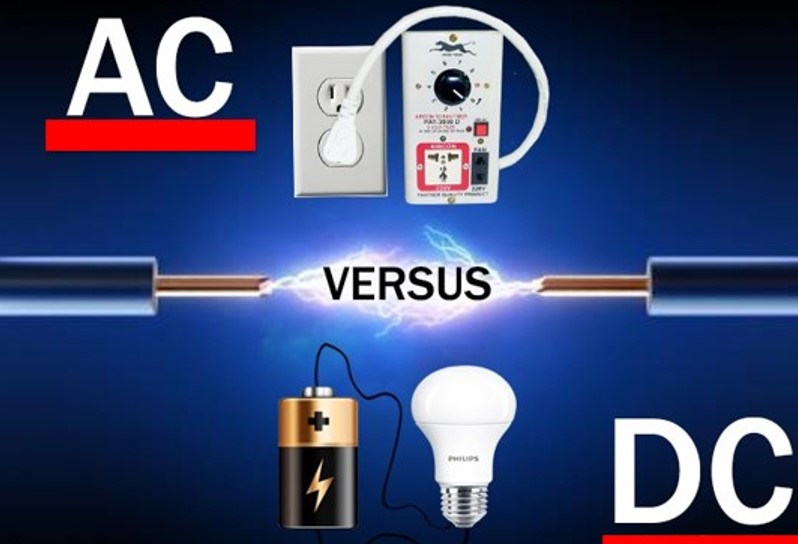
AC systems consist of phase and neutral conductors for a total of at least 3 conductors, although depending on the system they can be up to 5.
The conductors of DC systems are called positive and negative poles, and always consist of 2 conductors.
For its part, the distinctive colors of the cables in AC electricity depend on the voltage level. While the colors established for DC power cables are red for the positive pole and blue for the negative pole.
For both cases, it is standardized that the insulation of the ground wire is green or green with yellow.
In order not to lengthen the reading and thus not to bore you, this exciting topic continues in the following post called Electrical energy in telecommunications. Part 1.
I’m sure you will find it as interesting as this one! And if you want to find out about other news and content we have for you, subscribe to our website energydcac.

